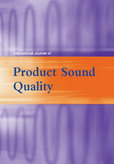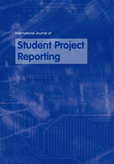Explore our journals
Browse journals by subject
Research picks
- Please take a seat for your virtual interview
There is seemingly no endeavour untouched by the potential of algorithms and artificial intelligence. Writing in the International Journal of Communication Networks and Distributed Systems, a Czech team discusses the potential for chatbots to carry out initial job interviews with candidates.
A chatbot-mediated screening process could allow wholly unsuitable candidates to be quickly removed from the short list so that interviewers can focus on those applicants best suited to the role being sought. Such a change in the way recruitment is undertaken raises ethical issues about just how fair is screening job applicants in this way, especially given many of the known problems surrounding algorithm training bias and other issues that have been raised about artificial intelligence carrying out human jobs.
Insights from the research could help guide exactly how companies approach recruitment in the wake of these intriguing technological developments. There are three important aspects that Helena Repová, Jan Zouhar, and Pavel Král of Prague University of Economics and Business consider in their paper: procedural justice, in other words, fairness in decision-making, interactional justice, fairness in how candidates are treated, and interpersonal justice, the quality of personal interaction.
The researchers compared applicant perceptions of these forms of justice across different interview formats, including interviews conducted by humans, chatbots, and those where the interview type wasn't revealed.
Chatbots offer a clear efficiency advantage to companies in screening applicants. But, for applicants accustomed to conventional interviews, issues of fairness, or a lack thereof, are apparent. Indeed, an applicant's perception of justice in recruitment might alter their opinion of the organization itself and deter bright and well-suited applicants from applying for a position with a given company in the first place based on that company using chatbots for initial interviews. Companies could miss out on talent and the talented candidates could miss out on their dream role!
Repová, H., Zouhar, J. and Král, P. (2024) 'Attractiveness of firms with chatbot as job interviewers: does the interviewer-type matter in the first contact with candidates?', Int. J. Communication Networks and Distributed Systems, Vol. 30, No. 6, pp.711–732.
DOI: 10.1504/IJCNDS.2024.141672 - Gleefully pitch perfect
A powerful algorithm that can automatically classify different singing voices by vocal characteristics is described in the International Journal of Bio-Inspired Computation. Balachandra Kumaraswamy of the B.M.S. College of Engineering in Bangalore, India, suggests that the development is an important step forward in music technology, allowing a system to quickly and accurately distinguish one voice from another without human intervention.
Everyone's singing voice is shaped by a range of physiological characteristics such as their vocal folds, lung capacity and diaphragm, the shape of their nose and mouth, the tongue and teeth, and more. Add to that the emotional delivery and stylistic choices a singer might make, and each of us sounds unique. It is fairly easy for us to tell singers apart, even if the singing is within a complex and textured musical environment. However, using machine learning to distinguish voices has remained challenging. Kumaraswamy's system performs well and could be employed in a wide range of contexts such as music cataloguing, streaming, recommendation, music production, and even for legal purposes such as copyright control.
The new approach takes four steps to distinguish between singers. The first is pre-processing in which an advanced convolutional neural network (CNN) identifies and isolates the vocals from a complex audio recording, discarding instrumentation and other non-vocal sounds.
The second step is feature extraction whereby key characteristics of the voice are obtained from the audio track and various metrics, such as the zero crossing rate (ZCR), which measures the frequency of signal changes, capture the characteristics of the singer's voice.
The third step involves an algorithm identifying the vibration patterns of the notes being sung and so can create a profile distribution of the harmonics to map the timbre, or texture, of the voice.
The final step used yet more neural networking in the form of bidirectional gated recurrent units (BI-GRU) and long short-term memory (LSTM) networks to analyse the vocal data. These two models can process sequences and so reveal the flow of a singer's performance over time. This last step is key to the success of Kumaraswamy's approach.
At this point in the development of the system, the neural networks used require extensive computational resources and large datasets for training. For now, this might limit scalability. However, such issues can be addressed with optimisation of the way the algorithms are applied and the training data used.
Kumaraswamy, B. (2024) 'Improved harmonic spectral envelope extraction for singer classification with hybridised model', Int. J. Bio-Inspired Computation, Vol. 24, No. 3, pp.150–163.
DOI: 10.1504/IJBIC.2024.141676 - The left and right of recycled price tags
The sale of refurbished products, refurbs, represents a delicate balancing act for companies attempting to retain a share of their market and to incorporate recycling strategies into their approach. A study in the European Journal of Industrial Engineering discusses this balancing act in the context of new and refurbished sales, where consumers weigh affordability against quality.
According to Yeu-Shiang Huang of National Cheng Kung University, Taiwan, Chih-Chiang of Zhaoqing University, China, and Yi-Hsiang Tsao of the National Cheng Kung University, Taiwan, businesses must decide how to stay competitive while addressing environmental concerns. The team has used game theory to model the kinds of decisions that retailers must make and offers them tips on that balancing act.
Selling refurbished as opposed to brand-new products, especially electronic gadgets and devices, represents a classic dilemma in economics. Refurbished products are usually sold at lower cost and so offer less profit for the retailer, but they might be more attractive to the consumer because they have eco-friendly credentials. Refurbs can thus undercut the sales of brand-new items. As such, manufacturers themselves remain hesitant in their adoption of remanufacturing, despite its environmental benefits. But, for retailers, offering refurbished goods can lead to a new class of sale.
The researchers have modelled the strategic interactions between manufacturers and retailers to look at how manufacturers set the official price for the wholesale cost of their new products, while retailers respond by adding refurbs to the mix and setting the best price for those and for the brand-new products they sell.
The research emphasises that it is the environmental rather than the economic that is at stake. Strict recycling laws mean that there is a drive towards refurbishment and recycling that the retailers can be happy with, but the original manufacturers may well not be. Indeed, if retailers can take control of recycling and remanufacturing and connect directly with the end consumers of refurbs, the manufacturers' share might shrink at least until the refurbished products have become wholly obsolete and can only be recycled for components and materials and a new product must enter the market. Retailers by working to their own economic strategy might thus play a critical role in driving sustainable practices.
Huang, Y-S., Fang, C-C. and Tsao, Y-H. (2024) 'A study on pricing and recycling strategies for retailers with consideration of selling new and refurbished products', European J. Industrial Engineering, Vol. 18, No. 6, pp.791–816.
DOI: 10.1504/EJIE.2024.141720 - Don't you know that you're toxic?
A comprehensive literature review in the International Journal of Process Management and Benchmarking sheds light on research into the notion of toxic leadership and how this increasingly pervasive issue affects the workplace and can damage organisations.
Emily Maria K. Jose and Bijay Prasad Kushwaha of the Vellore Institute of Technology, India, used a systematic approach to extract relevant research articles from a scholarly database. Their analysis of these papers revealed five principal characteristics of toxic leadership: authoritarian leadership, abusive supervision, narcissism, unpredictability, and maladjustment. Their findings highlight the nature of toxic leadership but also point to how it can affect employee engagement, performance, and retention.
Toxic leadership is defined as management behaviour that is ultimately harmful to both employees and the company for which they work. Toxic leaders are commonly indifferent to employee well-being and prioritize self-interest. The result is the creation of a working environment filled with fear and instability. The current review suggests that common toxic behaviour affects individual employees but also propagates through the corporate culture and so can affect an organisation deeply.
Jose and Kushwaha found that toxic leadership leads to high employee turnover rates. Indeed, almost three quarters of employees faced with toxic leadership will contemplate leaving their jobs. High staff turnover leads to a loss of team cohesion and other negative effects that will eventually have financial repercussions for the company if not remedied. Research suggests that toxic leadership can lead to almost a third of business failures each year.
The study discusses psychological safety and employee engagement, both of which can be affected negatively by toxic leadership. In a toxic work environment, employees become disenfranchised, which leads to a fall in their productivity and a deterioration of their work-life balance. A vicious cycle of dissatisfaction then feeds the toxic culture still further. There is thus a critical need for organisations to recognize and address this potentially destructive problem more proactively now than ever before. Effective coaching, constructive feedback, and monitoring should be key to mitigating the risks associated with toxic leadership behaviour, the research suggests.
Jose, E.M.K. and Kushwaha, B.P. (2024) 'The dark side of organisation identification: systematic literature review and bibliometric analysis on toxic leadership on employee's behaviour', Int. J. Process Management and Benchmarking, Vol. 18, No. 2, pp.240–265.
DOI: 10.1504/IJPMB.2024.141538 - Doing good can boost the bottom line
Can companies do well by doing good? Research in the International Journal of Productivity and Quality Management that has looked at companies listed on the Tehran Stock Exchange (TSE) provides a positive answer to that question. The researchers found that there is a strong link between corporate social responsibility (CSR) and financial performance. They also suggest that risk management is an important mediator of this effect.
Nasrin Dadashi and Seyyed Saeb of the Islamic Azad University, Rasht, Iran, and Ali Mayeli of Stony Brook University, New York, USA, explain that CSR is a rather broad term that covers a company's ethical conduct and its contributions to society. It spans three areas: economic, social, and environmental. CSR is, they suggest, no longer about box-ticking, green-washing, or rubber-stamping, and goes hand-in-hand with a company's financial health as well reflecting investor confidence. The team demonstrated that those companies that embraced CSR saw significant improvements.
This, they emphasise, is only half the story. Risk management, specifically Enterprise Risk Management (ERM), also emerged from the work as a key factor in the overall equation. ERM involves identifying, assessing, and mitigating potential threats to a company's objectives, is nothing new, yet the study shows it to play an important part not only in enhancing CSR, but also in boosting the positive impact CSR has on financial performance. CSR is no longer merely a moral imperative. CSR is a strategic imperative.
The team suggests that the integration of CSR and ERM into a company's core strategies will not only build trust and reduce the information gap between the company and its stakeholders, but also position it better for long-term success financially speaking. From the investor perspective, these findings also carry significant weight. When money is so often the only matter arising on an investor's agenda, they could do well to consider an investment's CSR and ERM, as they emerge as good indicators of future performance.
Dadashi, N., Mousavi, S.S. and Mayeli, A. (2024) 'The effect of social responsibility on financial performance with emphasis on the moderating role of risk management', Int. J. Productivity and Quality Management, Vol. 43, No. 1, pp.26–45.
DOI: 10.1504/IJPQM.2024.141493 - Mowing the green, green grass of social media
Social media is now rooted in the terrain of our daily lives. Research in the International Journal of Mobile Communications has looked at whether the psychological toll of our constant use of these tools and our comparing ourselves to others online is doing more harm than good. With the advent of always-on, ubiquitous messaging apps, we catch sight of more and more people participating in and enjoying the things we imagine we ourselves should be doing.
The notion of FOMO – fear of missing out – is always at the back of our minds even when other notions, detachment, acceptance, and mindfulness, are high on the mental health agenda. The researchers have studied the well known Chinese app WeChat and looked at the impact of social comparison and observed how it can go beyond merely influencing our thoughts and emotions but might shape online behaviour in unpredictable and putatively troubling ways.
Bao Dai of Hefei University of Technology, Anhui, and Lingling Yu and Ying of Shanghai University, Shanghai, China, explain that users of WeChat and similar apps often share highly curated, glossy snapshots of their lives. This leads others with perhaps less glamorous opportunities to experience envy and mental fatigue. Envy, in this context, refers to the unpleasant feeling that arises when individuals believe others are more successful, attractive, or happier than themselves. Fatigue, on the other hand, is the mental exhaustion that stems from constantly being bombarded with these idealized portrayals of life. Both emotions can act as catalysts, transforming the stress of comparison into tangible behavioural changes.
The team found that envy is much more detrimental than fatigue. Feeling like one is falling short can trigger a much stronger behavioural change that is not necessarily positive. They add that many users, overwhelmed by these emotions, choose to disengage. This disengagement takes two forms: discontinuance and information avoidance. Discontinuance is a full or partial withdrawal from the social media platform, where users cut back on their usage or quit entirely to avoid further emotional strain. Information avoidance, a more subtle but no less troubling response, occurs when users selectively filter out certain content and so avoid updates or posts that could reignite feelings of envy or inadequacy.
The research highlights the often hidden emotional price of staying connected in the digital age. While social media is lauded for its ability to foster communication and self-expression, it can also nurture environments where users feel more isolated or inferior. There is perhaps an urgent need for more research and for users and platform providers to address the darker side of digital connectivity.
Dai, B., Yu, L. and Chen, Y. (2024) 'Exploring users' behavioural responses to social comparison on social media: the mediating roles of envy and fatigue', Int. J. Mobile Communications, Vol. 24, No. 3, pp.330–354.
DOI: 10.1504/IJMC.2024.140735 - Winter is coming…check the powerlines
Winter is coming and in many places with it the risk of ice accumulation on overhead power lines and all the problems that can lead to, including, in extreme cases, pylon collapse.
Writing in the International Journal of Energy Technology and Policy, a team from China describes a new approach to monitoring ice accumulation on power lines and pylons using unmanned aerial vehicles, drones, to acquire images of the infrastructure and image-processing algorithms to identify icy problems.
Yang Yang, Hongxia Wang, Meng Li, Minguan Zhao, Yuanhao Wan, and Shuyang Ma of Xinjiang Power Transmission, Urumqi, Shenbing Hua of China Electric Power Research Institute Co., Ltd., Qifei He of the Power Dispatch Control Center of State Grid Corporation of China, Beijing, China, suggest their work could improve winter safety and reliability of electricity networks. It has real implications for countries such as China where transmission lines cross vast and diverse terrains stretching across remote and largely inaccessible areas.
Conventional approaches to checking for dangerous ice accumulation have led operators to act either too conservatively and so undertaking unnecessary maintenance or less cautiously and too late, risking damage and power outages. The new method uses camera-equipped drones to capture live images of power lines and then applies compressive sensing theory to the images to remove environmental noise and clean the data for processing. The Canny algorithm is then applied to carry out advanced edge detection to reveal ice formation on power lines. A random Hough transform then finds the straight edges of the ice deposits and helps with calculations of the ice thickness to show which stretches of transmission lines are likely to be problematic.
With China's weather extremes, a better way to monitoring power lines in winter is crucial to keeping the lights on.
Yang, Y., Hua, S., Wang, H., Li, M., He, Q., Zhao, M., Wan, Y. and Ma, S. (2024) 'Detection method of icing thickness of overhead transmission lines based on canny algorithm', Int. J. Energy Technology and Policy, Vol. 19, Nos. 3/4, pp.344–362.
DOI: 10.1504/IJETP.2024.141389 - Imagine the Bright Lights
A fictional business case study of an imaginary company known as Bright Lights is discussed in a research paper in the International Journal of Teaching and Case Studies. As the case study pans out, so the authors of the paper allude to the ethical decisions that a company might need to make and how these affect its response to strategic challenges, and ultimately its bottom line.
Lee Tyner and M. Suzanne Clinton of the University of Central Oklahoma in Edmond, Oklahoma, USA, consider Jim, one of Bright Light's top sales people. Jim's enterprising response to the company's new policies now has Bright Lights asking tough questions about loyalty, ethics, and the future of its corporate culture. Jim is known for generating strong sales through an innovative approach, but he is finding himself at odds with a major strategic shift initiated by the newly appointed national sales manager, Cindy. Cindy is a follower of the Pareto principle, 80% of revenue comes from 20% of clients. This has led her to nudge the company towards larger accounts, which has side lined smaller, loyal customers.
Cindy's approach is a data-driven approach common among many real businesses and is usually aimed are warding off rising competition and declining market share. But, it is implemented at a cost of carefully cultivated relationships of the kind that traditional salespeople may have cultivated over a long period with smaller but high-margin clients. In the imaginary case study, many of the smaller clients, no longer serviced by Bright Lights, feel abandoned, and face dissatisfaction with new suppliers. A common side effect of implementing the Pareto principle in the real world of business.
Jim has spotted an opportunity that will help him sustain his income and the lifestyle it brings. Jim's answer if not necessarily black hat, may nevertheless represent a grey area ethically speaking. Jim has formed a side business to fill the gap left by the strategic pivot of Bright Lights. This company buys up Bright Lights' inventory and then sells it to Jim's smaller clients who have been disenfranchised by Cindy's approach. Jim is not working in competition with his employer, strictly speaking, but it presents a dilemma for Bright Lights.
Should the company applaud Jim's initiative even if it blurs ethical lines and perhaps fragments the sales force or should it punish and so disenfranchise him, one of their top salespeople. How they respond will send a message to other salespeople in the company perhaps suggesting that innovative thinking and branching out in this way is not something the company wishes to promote.
The researchers suggest that the ethical dilemmas that their fictional case study raises could help companies examine the dynamics of their own place in the rapidly evolving business world where employees might take the initiative in improving their income.
Tyner, L. and Clinton, M.S. (2024) 'Case study: when a bright idea creates a business dilemma', Int. J. Teaching and Case Studies, Vol. 14, No. 4, pp.384–392.
DOI: 10.1504/IJTCS.2024.139178 - Mind the chat
Research in the International Journal of Technological Learning, Innovation and Development considers the growing influence of the large language model (LLM) ChatGPT. This and related tools are often colloquially referred to as generative artificial intelligence (AI) algorithms. The team has looked at how it might affect higher education.
Sami Mejri of Khalifa University, Moatsum Al Awida of Abu Dhabi University, Stavroula Kalogeras of Heriot-Watt University, Dubai, and Bayan Abu Shawar of Al Ain University, UAE, discuss some of the opportunities and risks faced by academic institutions where students and educators are using LLMs. This kind of software can be prompted to generate text that has many of the characteristics of human-written text and has already become a powerful tool in many areas. However, there are growing concerns about the impact of LLMs and related tools on academic integrity and the nature of education.
The team surveyed faculty, staff, and student groups and found that there is a tension between the potential for AI-driven educational innovation and the need to safeguard the principles of academic integrity. The researchers found that many respondents suggested that ChatGPT has the potential to reshape student engagement, creativity, and communication. However, there are risks associated with its use, not least reduced student effort and an increase in what might be considered academic dishonesty.
The ability of such tools to auto-generate coherent text from the vast datasets used to train ChatGPT, like a glorified autocomplete, one might ungenerously say, would suggest that its widespread use might undermine student intellectual development. Conversely, it might be argued that, aside from the issue of the origins of those datasets and copyright and plagiarism issues, the use of LLMs requires a level of creativity in devising prompts to trigger particular kinds of output from the LLMs and to make them useful. There is also a great need to validate and fact check any output from such tools.
The researchers suggest that there are various implications of their research. Higher education must adapt to the digital age and the emergence of AI tools like ChatGPT and others. These tools might transform not only how students learn but also how educators assess them. Traditional methods of assessment, such as essays or written exams, may need to be rethought as LLMs come to the fore.
As mentioned, there is creativity to be developed in prompting the likes of ChatGPT and it might be that the long-term effects on developing critical thinking, a foundational skill of education, could be taught or tailored to the assessment and validation of LLM output in ways not previously possible with published text, say. Educators might prompt their students to prompt an AI, but the learning and critical thinking skills then come from interpretation and assessment of the LLM output itself and comparison with how people might respond to those prompts.
There is no obvious answer to how we decided on where AI sits within education. We should recognise that AI and LLMs are tools, all tools can be used for good or bad. Educators will need to acquire an overarching understanding of these new tools, just as they did with earlier technological developments, and then be the guide for their students in their use as well as their instructors so that students can learn to use the tools positively.
Mejri, S., Al Awida, M., Kalogeras, S. and Shawar, B.A. (2024) 'ChatGPT: an emerging innovation or a threat to creativity and knowledge generation?', Int. J. Technological Learning, Innovation and Development, Vol. 15, No. 4, pp.425–448.
DOI: 10.1504/IJTLID.2024.140320 - The costa sting in the tale
A little-known threat to tourists in the form of stinging jellyfish could affect those who like to take a dip in between lazing in the heat on the sun-drenched beaches of Málaga. These sea creatures are of increasing concern along Spain's most tourism-dependent coastline, the Costa del Sol with more and more frequent outbreaks of jellyfish swarms since the summer of 2018. While beachgoers are often preoccupied with sunscreen and sangria, it turns out that jellyfish are creating a new kind of trouble in paradise, according to research published in Progress in Industrial Ecology, An International Journal.
Francisco José Cantarero Prados and Ana Luisa de la Fuente Roselló of the Department of Geography at the University of Málaga have studied the jellyfish swarms along Málaga's coastline, pinpointing the sections where swimmers are most at risk of encountering the creatures. To gather data, the researchers turned to citizen science and two mobile apps: Infomedusa and Medusapp. These apps allowed ordinary beachgoers to report jellyfish sightings in real-time. The crowdsourced data could then be combined with historical scientific data from the regional government. The team suggests that the citizen science data represents a useful, scalable, and cost-effective means of environmental monitoring.
The researchers then used geographic information system (GIS) technology to chart detailed maps of the coast and show that a 50-kilometre stretch from Benalmádena to Torre del Mar is particularly risky based on the historical and citizen science data. The implications of the research are important for beach tourism. Jellyfish blooms can shake up tourism, deterring visitors and so threatening the local economy.
The same approach to citizen science and GIS might also be used in the future to map and monitor other harmful coastal phenomena such as algal blooms, shark sightings, or even the effects of climate change on local marine ecosystems.
Cantarero Prados, F.J. and de la Fuente Roselló, A.L. (2024) 'Citizen science as a resource to define threats to bathing on beaches: the case of jellyfish in Malaga', Progress in Industrial Ecology – An International Journal, Vol. 17, Nos. 1/2, pp.26–39.
DOI: 10.1504/PIE.2024.140515
News
Inderscience's policy regarding the use of AI tools by authors
In line with COPE guidelines, artificial intelligence tools (e.g. ChatGPT) cannot be listed as named authors on submitted articles. Authors are fully responsible for the content of their article, even those parts produced by any AI tool, and are thus liable for any inaccuracies or breach of publication ethics.
Authors who have used AI tools to develop their article and/or to write, generate or edit text must include a note in the article's Acknowledgements section describing the technologies used and their purpose.
Please note that this policy does not apply to software such as spelling or grammar checkers or reference managers. Authors using such tools do not need to include a note about them in the Acknowledgements section.
Prof. Sangbing Tsai appointed as new Editor in Chief of International Journal of Dynamical Systems and Differential Equations
Prof. Sangbing (Jason) Tsai from the International Engineering and Technology Institute in China has been appointed to take over editorship of the International Journal of Dynamical Systems and Differential Equations.
Dr. Shoulin Yin appointed as new Editor in Chief of International Journal of Intelligent Systems Design and Computing
Dr. Shoulin Yin from the Shenyang Normal University in China has been appointed to take over editorship of the International Journal of Intelligent Systems Design and Computing.
Prof. Rongbo Zhu appointed as new Editor in Chief of International Journal of Radio Frequency Identification Technology and Applications
Prof. Rongbo Zhu from Huazhong Agricultural University in China has been appointed to take over editorship of the International Journal of Radio Frequency Identification Technology and Applications.
Associate Prof. Debiao Meng appointed as new Editor in Chief of International Journal of Ocean Systems Management
Associate Prof. Debiao Meng from the University of Electronic Science and Technology of China has been appointed to take over editorship of the International Journal of Ocean Systems Management.




